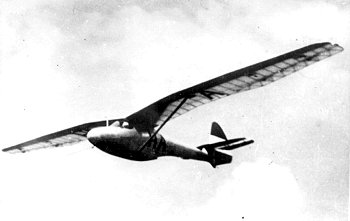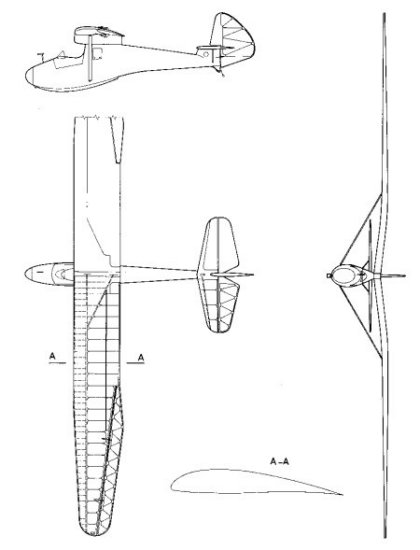| Type designation: | R-08a |
|---|---|
| Name: | A-Pilis |
| Designer: | Ernő RUBIK |
| Class: | Training |
| General arrangement: | High, strutted wing, open canopy, traditional tail unit |
| Crew: | 1 |
| First flight: | March 19, 1939 |
| Manufacturer: | Aero Ever Kft., Esztergom |
| Number of built: | 1 |


| Dimensions: | |
|---|---|
| Wing: | |
| Span, m: | 13,6 |
| Area, m2: | 15,7 |
| Aspect ratio: | 11,78 |
| Chord (root), m: | 1,2 |
| Chord (tip), m: | 0,75 |
| Airfoil (root), m: | Gö 533 |
| Airfoil (mid-span), m: | W-339 |
| Airfoil (tip), m: | W-299 |
| Dihedral, degree: | Outer panels: 0 |
| Sweep, degree: | 0 |
| Washout: | Aerodynamic and -3° geometric |
| Aileron: | |
| Span, m: | 3,75 |
| Mean chord, m: | 0,264 |
| Total area, m2: | 2,82 |
| Balancing: | None |
| Horizontal stabilizer: | |
| Span, m: | 3 |
| Area, m2: | 2,26 |
| Elevator: | |
| Span, m: | 3 |
| Area, m2: | 1,54 |
| Airfoil: | Symmetrical |
| Balancing: | None |
| Trim: | Yes |
| Vertical stabilizer and rudder: | |
| Total area, m2: | 1,18 |
| Rudder area, m2: | 0,93 |
| Balancing: | Aerodynamic |
| Fuselage: | |
| Length, m: | 6,0 |
| Width, m: | ? |
| Height: | 1,65 |
| Cross section, m2: | ? |
| Landing gear: | |
| Type: | Skid |
| Masses: | |
| Wing, kg: | ? |
| Fuselage, kg: | ? |
| Tail unit, kg: | ? |
| Empty glider, kg: | 150 |
| Gross, kg: | 250 |
| Ballast, kg: | None |
| Wing loading, kg/m2: | 15,9 |
| Speeds: | |
| VNE, km/h: | 160 |
| Max. aerotow speed, km/h: | 100 |
| Max. winch speed, km/h: | 70 |
| Max. speed in rough air, km/h: | ? |
| Stall speed, km/h: | ? |
| Performance: | |
| Min. sink, m/s (at gliding speed, km/h): | 1,0/? |
| Best L/D (at gliding speed, km/h): | 17/? |
| Start methods: | Bungee, Winch, Aerotow |
Origin of data and 3-view drawing:
Jereb Gábor: Magyar vitorlázó repülőgépek, Műszaki Könyvkiadó, 1988, Budapest
(Gábor JEREB: Hungarian Gliders, Technical Publishing House, 1988, Budapest)
Gábor FEKECS E-mail: fekecs.gabor@t-online.hu